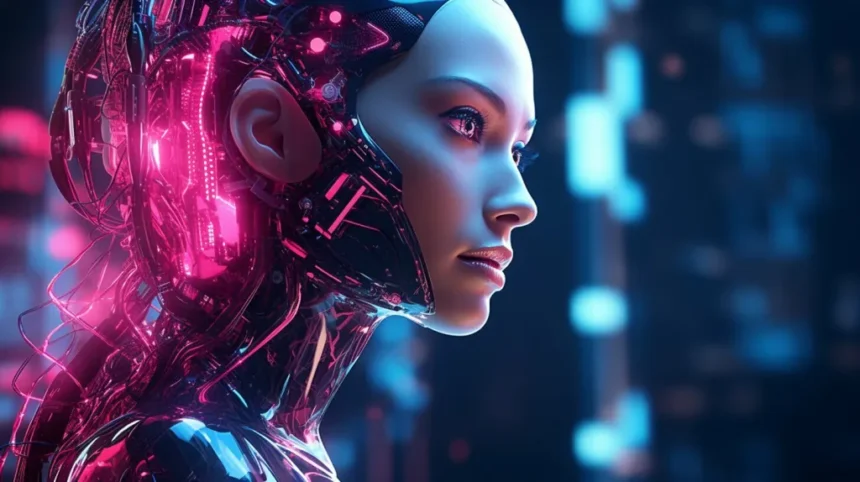But as technology advances, hyper-realistic character AI has really embedded itself deep into our lives. Whether life-like avatars in a video game, virtual assistants that can task-switch and hold their end of the conversation – these AI characters are blurring our digital boundaries with real-life. While the benefits of super realistic character AI are many, they also cause a set of ethical considerations that require careful thought.
Making hyper-realistic character AI
The AI behaviour that almost makes characters look like Digital Twins, is known as hyper-realistic character AI Chat. Applications of this technology can be common – from immersive video games to customer service bots or even the virtual Instagram influencer. Novel machine learning and natural language processing algorithms, combined with state-of-the-art graphics capabilities (looking at you Unreal Engine 4), have pushed the field forward to create visually stunning characters – those that can also interact meaningfully.
Hyper-realistic character AI can have big upsides. This gives greater dimension to user experiences by returning more realistic, tangible input – used for both gaming input and online interaction. For example, uses in education include hyper-realistic AI tutors or aides that can provide personalised learning services. Yet, these benefits are accompanied by a host of complex ethical challenges which need to be confronted.
Ethical Concerns
Misinformation and Deception
Easily one of the more immediate ethical problems with ultra life-like character AI is disinformation. Hyper-realistic AI, with it making deep fakes possible—videos or audio recordings that make people appear to be doing what they never did—is increasingly crossing the boundary between reality and the realm of wilful imagination. In an era when fact and fiction are blurred even further, this calls into question trust more broadly and by extension the authenticity.
Privacy Issues
The other major concern is privacy. Ultra realistic character AI needs to ingest an insane amount of data in order for it to function well, and from where exactly do you think they get all that super sensitive personal information? Rich characters who interact with users and collect sensitive information built a perfect storm of personal data waiting to be compromised. But this issue gets particularly pronounced when AI is dealing with sensitive audiences like kids or people who need mental health support.
Emotional Manipulation
There is also the chance of emotional manipulation with hyper-realistic character AI. These personalities have the ability to interact with users in a manner that can evoke strong emotions, impact their decisions and behaviors. From marketing or other social media interactions it raises ethical concern about what developers as well as the companies that employ technologies such is this are responsible for.
Impact on Society
Social Interactions
Of course, the algorithm is indeed ruthless enough to be called a social crime AI for its hyper-realistic character. People might never get off the couch and talk to computers so naturally, which may risk exacerbating social isolation, reliance on artificial relationships and its associated problems. Over time, the emotional attachments developed with AI might start to replace (or at least crowd out) real-life relationships and therefore change human connection.
Employment and Economy
Certainly, we can already see the economic boons to having hyper-realistic AI for character models from Warner Bros. With AI-operated characters increasingly automating functions traditionally performed by human agents, there is the risk of job replacement specifically in sectors like customer service providing, media or education. Some believe this will eventually lead to economic challenges as the future costs of automation and AI on employment become apparent.
Emotional and Cultural Impact
At a societal level, hyper realistic character AI could change the meaning of cultural and mental health. The closer to reality these characters get, the more real they become in creating bias facts. They also feared such a technological dependency would lead to an anti-social change in our culture (ie people preferring VR over the real thing), which has its mental health and societal implications.
Ethical and Regulatory Frameworks
Current Regulations
The way of examining AI and hyper-realistic characters are not regulated radically. There are some guidelines(1) for the design of conversational user interfaces, but few that account for many unique challenges their technology presents. The lack of full regulation imply several ethically minded concerns regarding the use of such hyper-realistic AI and opens doors to potential abuse.
Proposed Ethical Frameworks
But there is strong need to define robust ethical frameworks for development and implementation of super intelligent character AIs. These frameworks should be oriented around protecting user safety, privacy and transparency – but also promoting responsible innovation.
Role of Stakeholders
This requires the support from several kinds of stakeholders to ensure their ethically responsible use. Shift in designer priorities to consider the ethical implications of their AI, development of appropriate regulations by policymakers that protect consumers from undesirable exposure and awareness among users themselves about how they interact with AI.
The Paradox of Innovation and Ethical Conduct
Innovation vs. Ethics
Balancing the need for innovation with ethical responsibilities is a crucial priority. As appealing as the technological march can be, we have to enter that future with ethics accommodated on its way into reality. Managing this tension will be crucial if hyper-realistic character AI is to contribute positively to society.
Case Studies
The examples of real-world case scenarios depicted how important is the role of ethics in realising hyper-realistic AI. For example, the controversy surrounding some deepfake technologies is an indicator of why we need guidelines to avoid abuse and safeguard the rights of people. These could serve as lessons for the future AI design processes.
Future Outlook
The coming years are likely to see the further development of character AI that is not limited by processing power. The ethical conundrums connected to technology may change as the field advances, but they will still be there. And the reality is that it will require ongoing discussions and proactive measures to navigate this evolving landscape.
Conclusion
The increasing prevalence of hyper-realistic character AI raises some important ethical concerns which we should not ignore. With all the concerns surrounding misinformation, privacy, emotional manipulation and social impact more consideration needs to be given than ever before. Moving ahead, it is important for developers, policymakers and users to grapple with these questions and push for ethics in the AI space: regulating change. This particular strand of hyper-realistic character AI may or may not have a future, but by putting ethics before impact we will – at the very least- ensure that its impact favours humanity.


